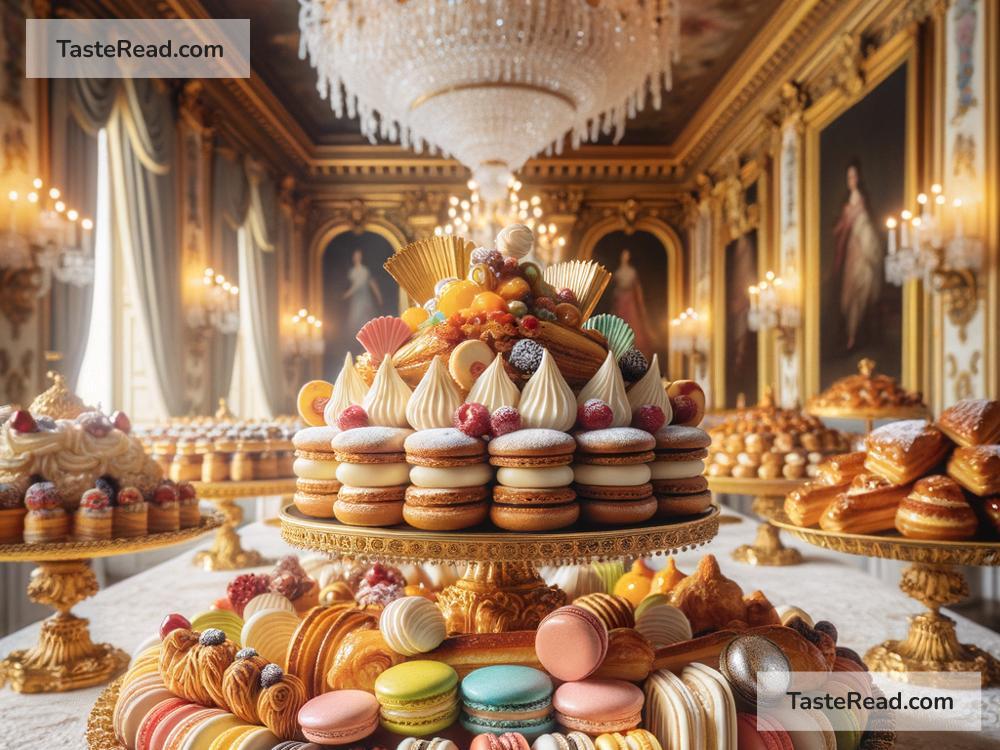The History of French Pâtisserie and Its Role in Celebrations
French pâtisserie, known around the world for its beauty and taste, is more than just a type of dessert. It is a symbol of French culture, craftsmanship, and celebration. From elegant macarons to golden croissants, these sweet treats are woven into the history and traditions of France.
In this blog, we’ll explore how French pâtisserie came to be, how it evolved over time, and why it holds such an important place in French celebrations.
The Beginnings of French Pâtisserie
The history of pâtisserie dates back to ancient times. Although the French perfected it later, the concept of desserts can be traced to civilizations like the Egyptians, Greeks, and Romans, who enjoyed honey and nuts in simple baked goods. In medieval France, people made basic pastries with flour, water, and oil. These early creations were not as fancy as today’s pâtisseries, but they laid the foundation for what was to come.
The turning point for pâtisserie came during the Renaissance (a period of cultural and artistic growth in Europe from the 14th to 17th centuries). In the 16th century, Catherine de Medici, an Italian noblewoman, married King Henry II of France. She brought Italian chefs and bakers to the French court, which introduced new techniques for pastry-making. This exchange sparked the development of more refined desserts.
The Rise of Pastry Arts
During the 17th and 18th centuries, French pâtisserie began to flourish. Bakers started experimenting with butter, sugar, eggs, and cream to create more delicate treats. Puff pastry, for example, became popular during this time. The idea of layering dough with butter and folding it multiple times led to the creation of light, flaky pastries like croissants and mille-feuille (the “thousand-layer” pastry).
One important figure in the history of French pâtisserie was Antonin Carême, often called the “King of Chefs and Chef of Kings.” He revolutionized the art of pastry-making in the 19th century. Carême emphasized presentation, turning desserts into edible works of art. His creations were elaborate and often featured tall towers made with cream, sugar, and pastry.
Another famous innovation was the invention of choux pastry, used to make treats like éclairs, profiteroles, and cream puffs. This dough is light and airy, making it perfect for filling with rich creams or custards.
Pâtisserie in Everyday Life and Celebrations
French pâtisserie isn’t just about delicious food—it’s closely tied to celebrations and traditions. In France, pastries are more than desserts; they’re a way of marking special moments in life.
Weddings and Family Celebrations
At weddings, French pastry chefs often create elaborate centerpiece desserts like the croquembouche, a tower of cream-filled choux buns held together with caramel. This dessert is as beautiful as it is tasty and symbolizes unity and joy.
Pastries also play a role in birthday celebrations. Cakes adorned with fruits, chocolate, and cream are common, and no French birthday is complete without a delicious dessert to mark the occasion.
Seasonal and Religious Celebrations
Certain French pastries are tied to specific holidays. For example, during Epiphany (a Christian festival in January), people eat galette des rois, or King’s Cake. This flaky pastry is filled with almond cream, and inside, there’s a small figurine, called a “fève.” Whoever finds the fève in their slice becomes king or queen for the day—a fun tradition enjoyed by families.
Similarly, Easter is celebrated with chocolates and desserts shaped like eggs, rabbits, or springtime symbols. Christmas is another time for indulgence, with families gathering to enjoy cakes like the famous Bûche de Noël (Yule log), a rolled sponge cake decorated to look like a tree log.
Daily Rituals and Community
Beyond special occasions, pâtisserie is part of daily life in France. Many French people visit their local boulangerie-pâtisserie (bakery and pastry shop) to buy fresh croissants or pain au chocolat for breakfast. On Sunday afternoons, families often pick up desserts like fruit tarts or chocolate éclairs to share after a meal.
Pâtisserie is also about community. Sharing desserts with friends and loved ones is a way of connecting and adding sweetness to life’s little moments.
French Pâtisserie Around the World
French pâtisserie has spread far beyond its borders, inspiring chefs and bakers across the globe. Famous French pastries like macarons, éclairs, and tarts are now enjoyed in bakeries everywhere. Baking schools around the world teach French techniques, and Paris remains the ultimate destination for dessert lovers.
Conclusion
French pâtisserie is more than a food—it’s an art form and a tradition. Its history reflects centuries of innovation and creativity, from medieval beginnings to the masterpieces of today. Whether marking special occasions, celebrating holidays, or simply brightening everyday life, pâtisserie plays a key role in French culture.
So next time you bite into a buttery croissant or admire a colorful macaron, remember the rich history and craftsmanship that brought it to your plate. French pâtisserie truly makes life sweeter, and its place in celebrations reminds us that great food is worth enjoying with those we love.


